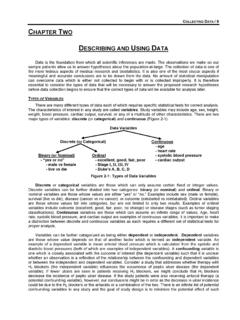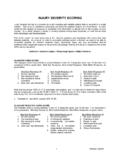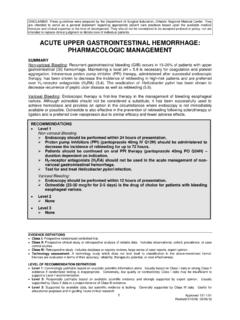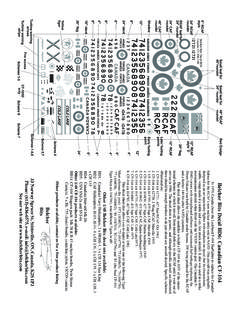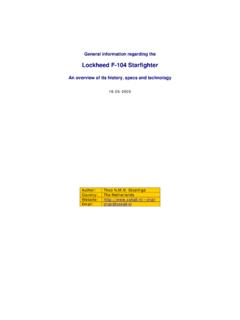Transcription of Gabapentin and Postoperative Pain - SurgicalCriticalCare.net
1 DISCLAIMER: These guidelines were prepared by the Department of Surgical Education, Orlando Regional Medical Center. They are intended to serve as a general statement regarding appropriate patient care practices based upon the available medical literature and clinical expertise at the time of development. They should not be considered to be accepted protocol or policy, nor are intended to replace clinical judgment or dictate care of individual patients. EVIDENCE DEFINITIONS Class I: Prospective randomized controlled trial.
2 Class II: Prospective clinical study or retrospective analysis of reliable data. Includes observational, cohort, prevalence, or case control studies. Class III: Retrospective study. Includes database or registry reviews, large series of case reports, expert opinion. Technology assessment: A technology study which does not lend itself to classification in the above-mentioned format. Devices are evaluated in terms of their accuracy, reliability, therapeutic potential, or cost effectiveness.
3 LEVEL OF RECOMMENDATION DEFINITIONS Level 1: Convincingly justifiable based on available scientific information alone. Usually based on Class I data or strong Class II evidence if randomized testing is inappropriate. Conversely, low quality or contradictory Class I data may be insufficient to support a Level I recommendation. Level 2: Reasonably justifiable based on available scientific evidence and strongly supported by expert opinion. Usually supported by Class II data or a preponderance of Class III evidence.
4 Level 3: Supported by available data, but scientific evidence is lacking. Generally supported by Class III data. Useful for educational purposes and in guiding future clinical research. 1 Approved 9/28/2016 Gabapentin FOR ACUTE Postoperative PAIN SUMMARY Gabapentin (Neurontin ) has gained significant interest as part of a multi-modal pain management strategy for the control of acute pain. There has been considerable variation in both the dose and the regimen used in recent clinical trials.
5 Most have relied on pre-operative dosing and have utilized a single dose of 300 to 1200 mg. Higher doses seem to show a decrease in Postoperative pain, a reduction in narcotic requirement, and reduction in narcotic related adverse effects such as nausea, vomiting, and ileus, with a propensity for causing sedation and dizziness. INTRODUCTION Gabapentin and other anticonvulsant medications have been established as an effective treatment for chronic neuropathic pain and are commonly used for such conditions as herpetic neuralgia, diabetic neuropathy, and phantom limb pain following amputation.
6 These medications act by reducing the activity of calcium channels in GABA-ergic neurons thereby activating the noradrenergic spinal pathway which in turn reduce the expression of the spinal cord excitatory amino acids glutamate and aspartate. There has been recent interest in this medication for use as an adjunct for acute pain as part of a multi-modal pain management strategy. LITERATURE REVIEW In 2004, Pandey et al. investigated the use of a single 300 mg dose of Gabapentin preoperatively in patients undergoing single level lumbar discectomy (1).
7 They found that patients receiving Gabapentin preoperatively had a decrease in use of post-operative fentanyl ( g vs. g). In RECOMMENDATIONS Level 1 Pre-operative Gabapentin (600-1200 mg) reduces Postoperative pain scores, decreases narcotic requirement, and decreases narcotic-related side effects such as nausea, and ileus. Level 2 Post-operative Gabapentin (600 mg) may be equally effective as a preoperative dose in improving pain scores and decreasing narcotic requirement and narcotic related side effects.
8 Data does not support repeat dosing of Gabapentin in the Postoperative period. Level 3 Concomitant administration of Gabapentin as part of a multi-modal pain management strategy including narcotics, non-steroidals, and muscle relaxants may improve pain scores in selected patients. 2 Approved 9/28/2016 a follow up study in 2005, they evaluated Gabapentin in increasing dosages to evaluate for the optimal pre-operative dose (2). Patients were divided into 5 groups and received placebo, 300 mg, 600 mg, 900 mg, or 1200 mg.
9 They found that pre-operative Gabapentin decreased patient use of fentanyl at all dosages. There was no advantage found in raising the dose from 600 mg to 1200 mg. They concluded 600 mg was the optimal dose for pre-operative Gabapentin administration. In 2006, Ho et al. performed a review of 16 randomized controlled trials (RCTs) evaluating the use of preoperative Gabapentin in controlling Postoperative pain (3). This was a very heterogeneous group that included orthopedic, gynecologic, urologic, breast, and head/neck surgeries.
10 They found that a single preoperative dose of 1200 mg effectively reduced Postoperative pain and opioid consumption. Multiple doses of Gabapentin preoperatively, and continued postoperatively, did not appear to reduce pain scores. Incidence of opioid adverse effects such as vomiting, and pruritus were lower in the Gabapentin group. Although not statistically significant, there was a trend toward a lower incidence of nausea, urinary retention, and constipation in the Gabapentin group.


